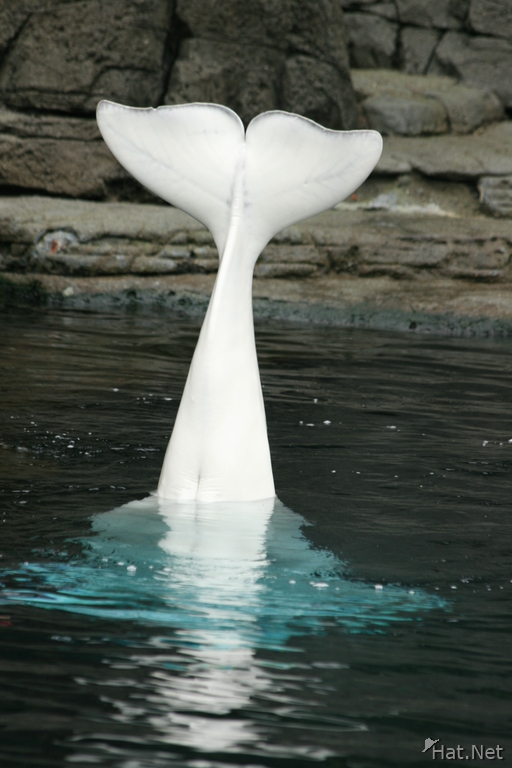tail of beluga, aquarium
The Beluga was first described by Peter Simon Pallas in 1776. It is a member of the Monodontidae family, which is in turn part of the toothed whale suborder. The Irrawaddy dolphin was also once considered to be in the same family; however, recent genetic evidence suggests otherwise.
The earliest known ancestor of the beluga is the prehistoric Denebola brachycephala from the late Miocene period. One single fossil has been found on the Baja California peninsula, indicating that the family once existed in warmer waters. The fossil record also indicates that in comparatively recent times the beluga's range has varied with that of the ice pack � expanded during ice ages and contracting when the ice retreats.
The Red List of Threatened Species gives both Beluga and White Whale as common names, though the former is now more popular. The English name comes from the Russian белуга (beluga) or белуха (belukha) which derives from the word белый (belyy), meaning "white". It is sometimes referred to by scientists as the Belukha Whale in order to avoid confusion with the Beluga sturgeon. The whale is also colloquially known as the Sea Canary on account of the high-pitched squeaks, squeals, clucks and whistles.
| Date | 2008:02:10 11:03:28 | Make | Canon |
|---|---|---|---|
| Model | Canon EOS DIGITAL REBEL XTi | Width | 2592 |
| Height | 3888 | Flash | Off, Did not fire |
| Focal | 225.0 mm | Exposure | 1/50 |
| F Number | 5.6 | ISO | 200 |
| White Bal. | Manual | Metering | Multi-segment |
| Program | Aperture-priority AE | Compensation | 0 |
| Hyperfocal | 486.93 m | Latitude | 49.3006666666667 |
| Longitude | -123.1315 | Altitude | 30479.69531 m |
| File Size | 2.8 MB | ||

